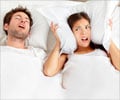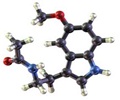Daytime functional impairments in older men with obstructive sleep apnea (OSA) are largely explained by total sleep time rather than OSA severity, Says study.
A study in the Feb. 1 issue of the journal SLEEP shows that daytime functional impairments in older men with obstructive sleep apnea (OSA) are largely explained by total sleep time rather than OSA severity.
A modest link between OSA severity and daytime sleepiness, measured by the Epworth Sleepiness Scale, was no longer statistically significant after controlling for total sleep time. Neither sleep disturbances, measured by the Pittsburgh Sleep Quality Index, nor sleep-related quality of life, measure by the Functional Outcome of Sleep Questionnaire, were associated with OSA severity; all three measures were modestly associated with total sleep time.According to lead author Dr. Eric J. Kezirian, director of the division of sleep surgery in the department of otolaryngology at the University of California in San Francisco, the study shows that the functional consequences of OSA in older men may differ from those in younger populations and may need to be measured with instruments designed specifically for the demographic.
"While the disorder is associated with behavioral and health-related effects that improve with treatment in young and middle-aged adults, there is little evidence concerning its adverse consequences or treatment benefits in older adults," said Kezirian. "This study showed that in a community-dwelling group of older men, the severity of OSA was not associated with daytime sleepiness, sleep symptoms, or sleep-related quality of life, after controlling for sleep duration."
Data were collected from 2,849 men with a mean age of 76.4 years. Thirteen percent (365/2849) of participants had an ESS of at least 10, a level commonly considered to be excessive sleepiness. The presence and severity of OSA were measured by in-home polysomnography. Overall the study group demonstrated mild to moderate OSA with an average apnea-hypopnea index (AHI) of 17.0. Forty-three percent had an AHI of 15 or more.
Average total sleep time was measured by actigraphy over multiple nights. Thirty-one percent (889/2849) had a short sleep time of less than 360 minutes per night, and the prevalence of short sleep time increased with AHI. Individuals with higher AHI levels also were slightly older than men with lower AHI levels, and they had a higher body mass index, poorer self-reported health status and a higher Geriatric Depression Scale score.
Keizirian said that having a better understanding of OSA in older adults will help medical professionals treat the condition more effectively.
Advertisement
PRI/S















